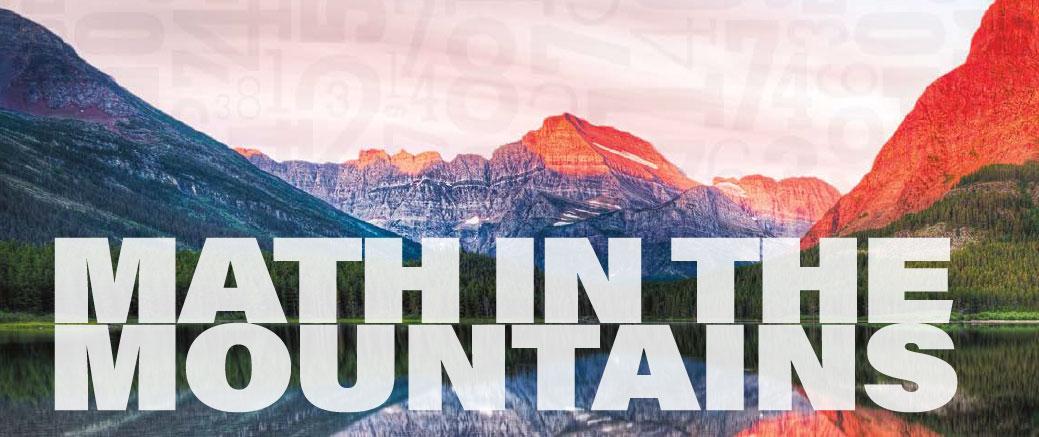Note: This article originally appeared in the 2016 edition of Carroll Magazine and has been adapted for the web
by Sarah Lawlor, Director of Public Relations
"What does one do with a degree in math?"
![]()
For those that have chosen the math path, they know this is not an unlikely question posed at family gatherings and cocktail parties. Many assume the answer will be to follow a career in academics or research. And while not an unreasonable assumption, mathematicians are in fact very much in demand across a spectrum of industries. In fact, according to the U.S. Bureau of Labor Statistics, employment of mathematicians is projected to grow 21 percent from 2014 to 2024, much faster than the average for all occupations.
So how does Carroll best prepare our students for this burgeoning career field? Those that excel at math have strong analytical skills and are problem-solvers by nature. Carroll math professors have taken that knowledge and worked diligently to help make math less abstract and more applicable to day-to-day scenarios. Carroll’s new Math in the Mountains program is an extension of that ongoing effort.
Math in the Mountains is an interdisciplinary course in which students engage in a hands-on learning experience using mathematical modeling to understand current major societal issues of local and national interest. The course is run in collaboration with local businesses, research centers, non-profits, and government organizations that provide data so that teams of students can act as consultants throughout the course thus creating strong connections throughout between Carroll College and the greater Helena community, while engaging in a learning and discovery process.
"One of the greatest strengths of the Carroll math program has always been its focus on modeling and ‘real world’ applications,” says Dr. Eric Sullivan, assistant professor of mathematics. “In almost every class we offer, students work on a project with some sort of real-world application. This new Math in the Mountains course takes that one step farther.”
![]()
In other math classes, it can be challenging to have students understand how math can be used outside of academics. Working with Helena community partners in Math in the Mountains makes that task much easier to convey. It’s no longer abstract. The students get involved with genuine problems faced by real non-profits, businesses or government agencies in their community. This not only drives home the applicability of what they’re learning, it brings out the best in the students.
“Taking this course was a big learning experience for me,” said senior civil engineering major Kyle Demsher. “I had never taken a project-based math course and had to work as a team like we did this semester. Everyone brought something a little bit different to the project which helped it go smoothly. I’m glad that I got to be a part of it.”
Two of the community partners involved in the course this past semester were Helena Food Share and St. Peter’s Physical Therapy Clinic. For Helena Food Share, students developed an ‘early warning’ inventory management system (based on historical data provided by HFS) that predicts when supplies of a particular food item might be too low to meet community needs. While at St. Peter’s Physical Therapy Clinic, students worked with physical therapists at a branch of St. Peter’s PT clinic to analyze therapist scheduling protocols and therapist efficiency. Taking into account the needs of patients, the abilities of the therapists, and a variety of legal requirements and accepted clinical recommendations, the students devised a metric for measuring therapist efficiency and helped the clinic to determine what levels of efficiency could be reasonably expected from workers.
“It’s very rewarding to work with students and see how professional they can be in approaching a clinical seeing they had no prior idea about,” said St. Pete’s physical therapist Johnanna Sullivan. “They were always professional and meticulous in identifying our needs as well as really interested in solving our problem.”
Other institutions offer experiential- or service-learning opportunities as senior projects, honors theses, or capstone courses. For Carroll, that is seen as too late. Because of the interdisciplinary and collaborative nature of this work, Carroll wants its students engaged in this type of learning earlier on in their educational progression. Understanding the applicability of finding real world solutions using mathematical principles is an eye-opening experience for the students.
“Students sometimes view the courses they take as independent from one another,” said Dr. Ted Wendt, associate professor of mathematics. “What they do in a stats course doesn’t seem to relate to what they do in a calculus or optimization course. Working on projects in Math in the Mountains gives them the opportunity to integrate what they’ve learned in their different courses, and provides them with glimpses of other math that they might not see elsewhere in the curriculum.”
Ultimately, Math in the Mountains not only brings the ‘real world’ into the classroom but it brings the classroom into the real world.

